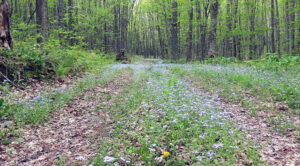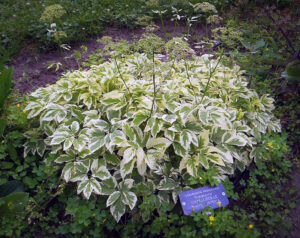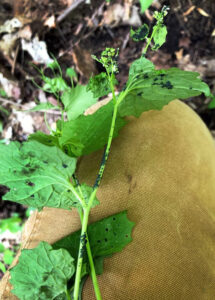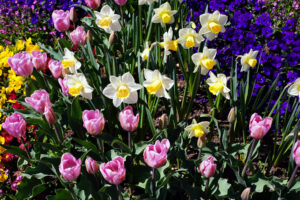By Erika Segerson-Mueller, DNR Invasive Plant Program Specialist, Oshkosh Service Center;
Erika.SegersonMueller@wisconsin.gov or 715-492-0391

A forest road is covered by a blanket of Woodland forget-me-not. / Photo Credit: Caleb Slemmons, National Ecological Observatory Network, Bugwood.org
These easy-to-grow, sweet-sounding, small blue flowers may seem appealing, but you should forget about forget-me-nots. A garden plant frequently found in mixed bouquets, forget-me-nots can easily escape the confines of a garden and spread aggressively.
There are two species regulated as invasives in Wisconsin: an Aquatic forget-me-not (Myosotis scorpiodes) and Woodland forget-me-not (Myosotis sylvatica). Both species are restricted under Wisconsin’s Invasive Species Rule NR40, so control is encouraged if they are found on your property. These species cannot be transferred, transported or introduced without a permit.
Both the aquatic and woodland species of forget-me-not bloom in early spring and can share many visual characteristics. Continue reading “Forget About Planting Forget-me-nots” →







